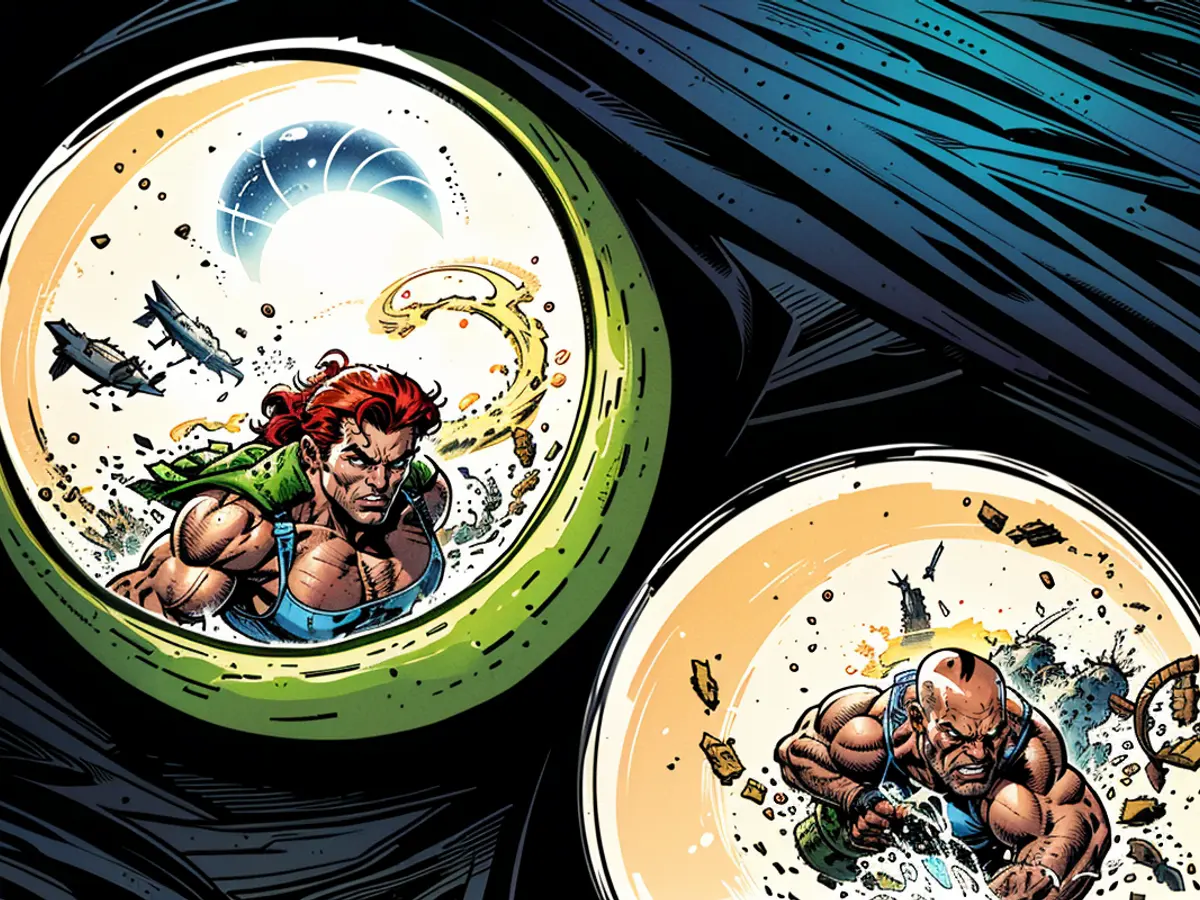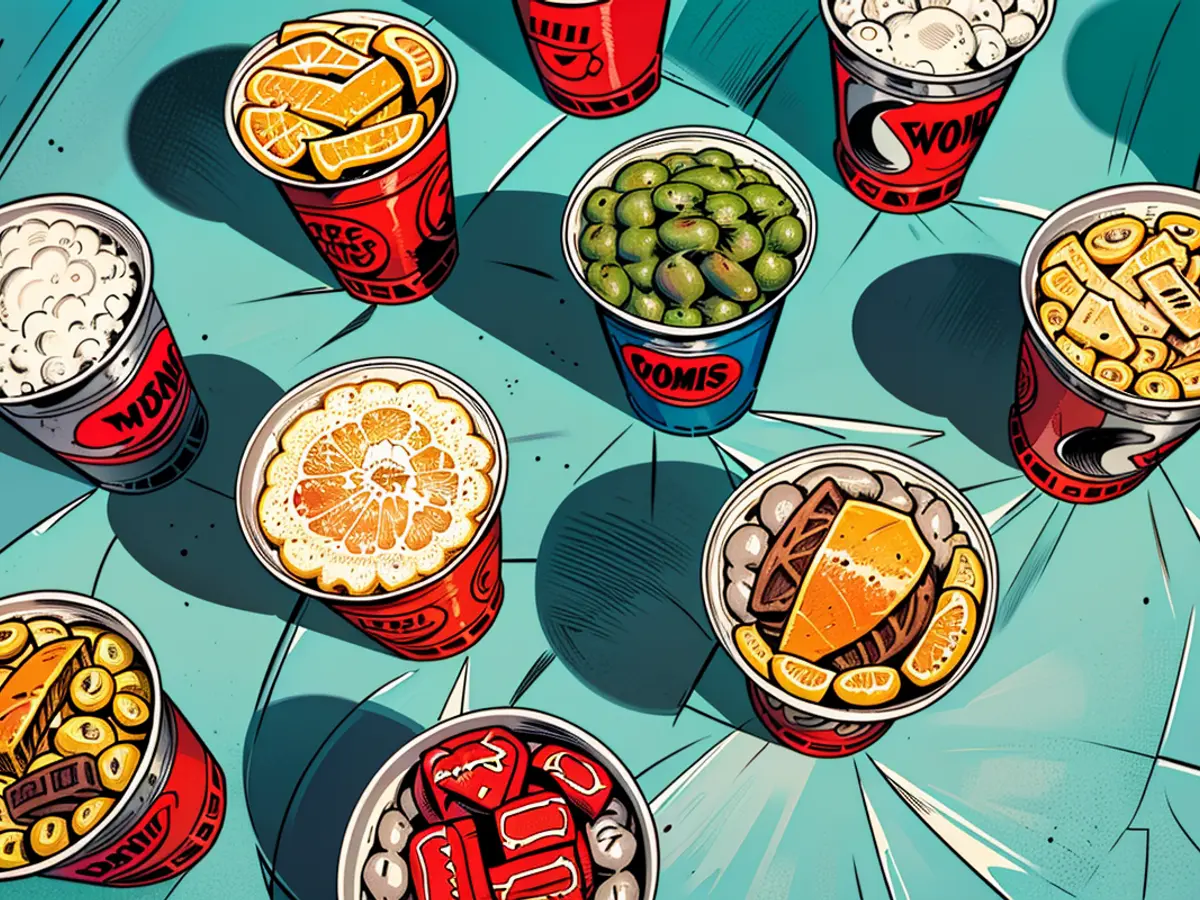Unscrupulous Soda Establishments Aim to Replicate Starbucks' Success
It was an unusual occurrence, as Myrick pointed out.
In 2023, Myrick, who declares her deep passion for soda, visited Utah as part of a "The Real Housewives of Salt Lake City"-themed weekend trip. At a local shop called Thirst, she tried a conventional dirty soda blend: Dr Pepper, coconut cream, and a raspberry syrup.
Now, she's urging them to establish a location in Los Angeles, she mentioned.
Dirty soda is a non-alcoholic beverage blended with creams, flavorful syrups, or fruit. These concoctions have become deeply ingrained in Mormon culture in the Mountain West, where the religion prohibits the consumption of coffee and alcohol. However, thanks to social media, Mormon mommy influencers, and a new reality TV show set in Utah, these sugary drinks are gaining more mainstream acceptance – and the shops promoting them have expansive ambitions to match.
Nonetheless, some critics raise concerns about the drinks' high sugar content and calorie void. Others ponder whether it's just a passing trend for the rest of the country. Consuming more than one sugary soda a day could potentially lead to obesity, heart disease, and type 2 diabetes, although both soda shops and their loyal followers claim that the drink can be tailored to be healthier, such as by using sparkling water.
The allure of Utah culture simmers beneath all that fizz. On one episode of the Hulu reality show "The Secret Lives of Mormon Wives," a group of moms in matching hair extensions and athletic wear congregate at Swig, the self-proclaimed "dirty soda" pioneers. They view it as their vice.
"Six days out of seven, I'm consuming at least one 44-ounce soda," said one cast member on the show. "I'm likely only going to live to 50, but it makes me happy."
Many social media users have posted videos recreating the moms' complex orders (44 ounces, sparkling water, sugar-free coconut, sugar-free vanilla, sugar-free raspberry, sugar-free pineapple, and coconut cream). Another person on TikTok questioned if Swig was the Mormon equivalent of Starbucks.
While Swig may seem like Starbucks for soft drinks, Swig CEO Alex Dunn maintains, "People were drinking soft drinks before Swig came around, but we've created this premium brand and experience around that."
'Indulgent indulgence'
Dirty sodas are currently popular because, according to Boston Consulting Group managing director Chris Goodchild, "more and more people are using them to fulfill indulgent, pleasure-seeking aspects."
The meteoric rise of soda shops is spreading beyond the Mormon Corridor in the Western United States. Swig, established in 2010, will expand to 13 states by the year's end and already has plans to enter two more states in 2025. Swig's growth is primarily focused on the South – Florida, Kentucky, and the Carolinas are among their targets – but expansion to Kansas, Indiana, and Missouri in the Midwest is also underway.
Swig, which started 2024 with 61 stores, aims to open 1,000 new stores over the next six to seven years. Swig is not a publicly traded company and declined to disclose financial details.
While Swig appears to be the market leader in terms of store numbers, competitors are closing the gap. FiiZ has opened approximately 60 shops, followed by Sodalicious at 25. Sonic began offering customers the Dr Pepper option to "make it dirty," and Coffee Mate even released a limited-edition Coconut Lime creamer in collaboration with Dr Pepper to allow dirtier sodas at home this year.
Mixture of dairy with soda is not a novelty for a significant portion of the world. In the Punjab region of South Asia, doodh soda (directly translated as milk soda) is a popular lemon-lime drink, primarily during the fasting month of Ramadan. Persians indulge in doogh, a carbonated yogurt drink. Korean "Milkis" are common fixtures in K-Towns and are available in a variety of flavors, from banana to apple. And of course, there's the classic American ice cream float, a reminiscence of the 20th century soda fountain jockeys.
Soft drink manufacturers themselves have tried to sell milk and soda to American consumers. Two years ago, Pepsi launched a campaign to promote the combination, tagging it as a "secret hack among Pepsi fans." Lindsay Lohan served as its spokesperson.
However, it's the airy, drive-through soda shops – with names like Poppin' Pineapple and Unlucky Ducky – that have catapulted these concoctions into the national limelight.
And if there's one thing the American consumer appreciates, it's an abundance of choices, said Goodchild. Shops such as Swig offer an overwhelming array of ways to express your whimsical beverage preferences. If you're on a diet, you can substitute Coke with sparkling water. You can add artificial syrups – from raspberry to toasted marshmallow – and mix it with fruit purees, coconut cream, vanilla cream – or a combination of all three.
As coffee chains like Starbucks and Dutch Bros draw consumers with a personalized experience, consumers are attracted to the personalized experience of these soda shops.
"It's almost a form of self-expression. This is my drink, this is the thing that I want," Goodchild said.
What truly astounded Myrick was the sheer variety of options.
"I really thought I was just going to visit a restaurant that only served Diet Coke with half and half," Myrick said.
Swig's audience primarily consists of females and individuals within the age range of 18 to 45. Swig has capitalized on this demographic by leveraging social media, with the majority of its social media assets being organically sourced. Notable social media personality and model, Nara Smith, even recorded herself trying Swig's sweet beverages in her car.
Soda shops also cater to cities and suburbs that rely heavily on cars, with Swig's footprint typically spanning between 1,200 to 1,800 square feet, demonstrating the chain's focus on drive-through services. While this model works well in suburban areas, it may not be as successful in major cities. Most other soda shops also incorporate drive-through lanes.
As social media trends shift, soda shops will need to ensure their offerings remain relevant. With such ambitious growth targets, this is no small feat.
According to industry expert Goodchild, "As it continues to rise, you'd anticipate either traditional players offering these kinds of things in their existing stores, or some traditional players who are expanding into new formats."
When a specific beverage becomes hard to find, its allure increases. This format and technology already exist, and could potentially emerge as a future competitor if 'dirty soda' becomes mainstream – similar to Coca-Cola's freestyle machine, which was introduced in 2009 and could easily incorporate half and half or syrups. Social media users residing far from soda shop locations are already crafting 'dupes' at Wawas and 7-Elevens, utilizing gas station creamer instead of employing soda baristas.
Regardless, a Swig-style soda shop, Cool Sips, has even opened in trendy New York City, but its cultural impact may take time to materialize in the Northeast.
New York City resident Klea Mulla commented, "It's what you grow up with, and it could be an alternative, but it's not just comparable if you're already a coffee drinker. It's tough here because the vibe of the soda shops is a drive-through."
Myrick believed that the success of Thirst in Los Angeles could boost its business significantly.
Given the growing popularity of dirty sodas, some established beverage companies might consider incorporating these blends into their offerings.









